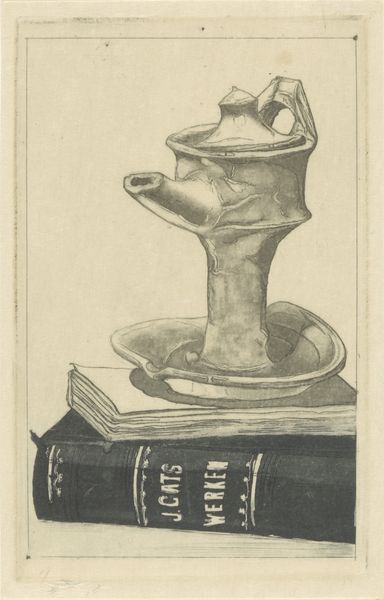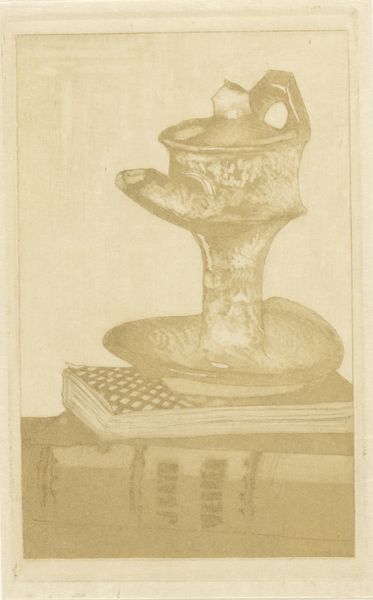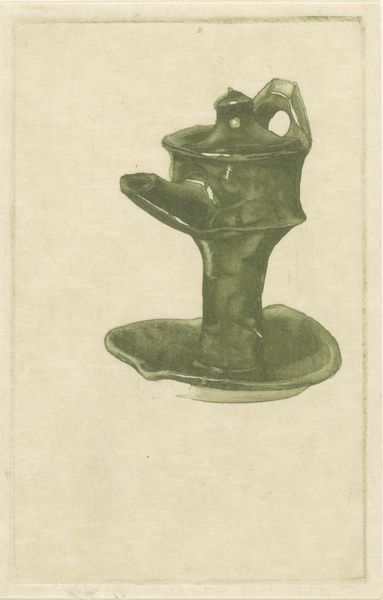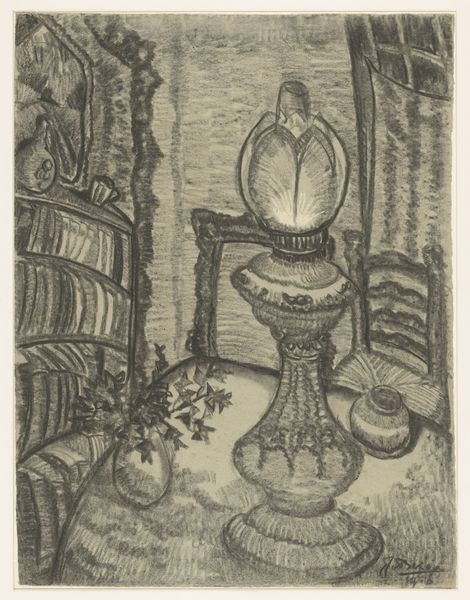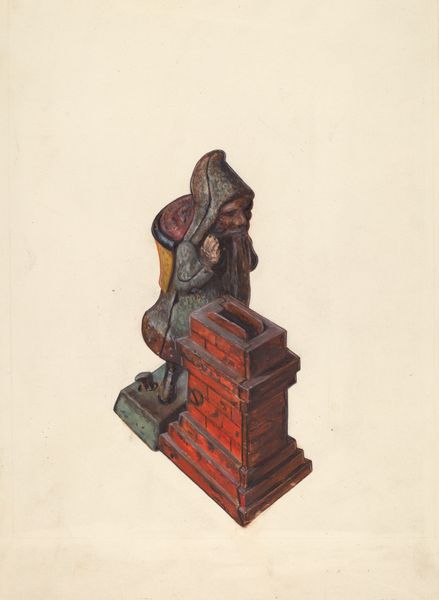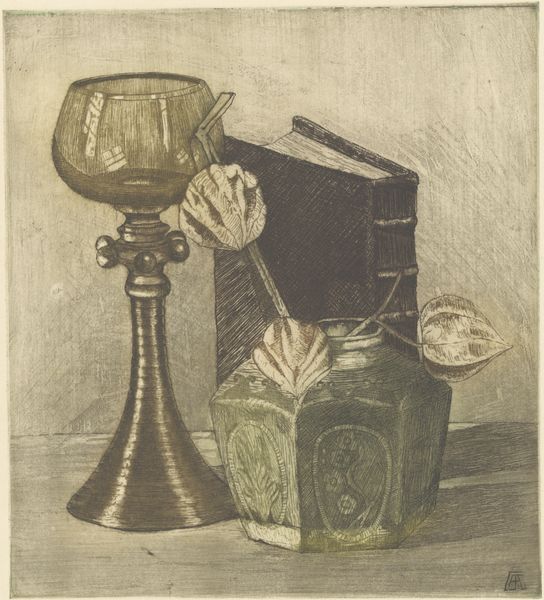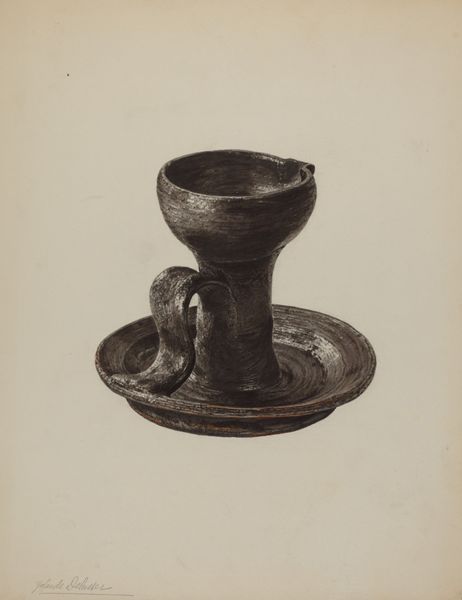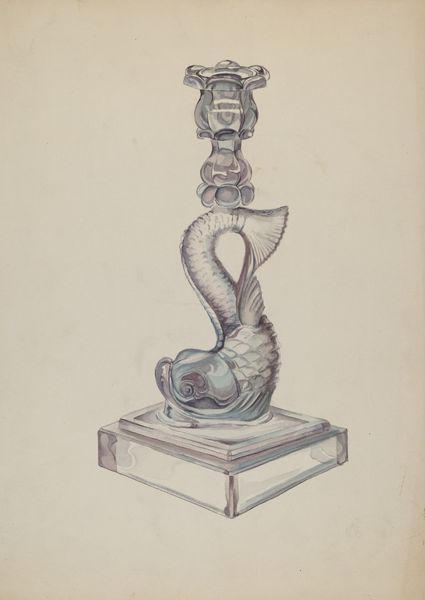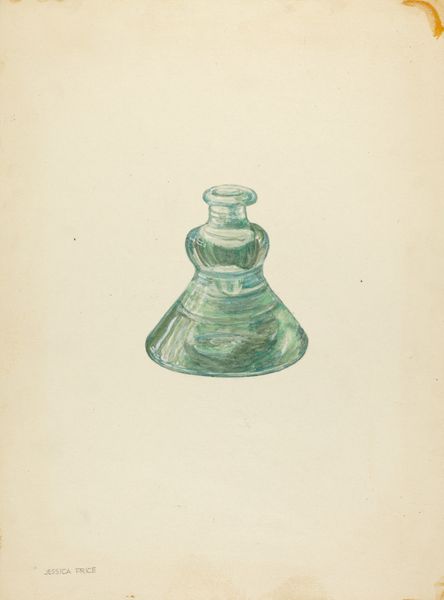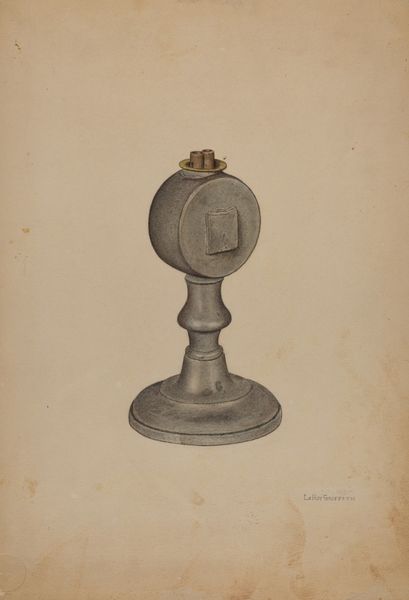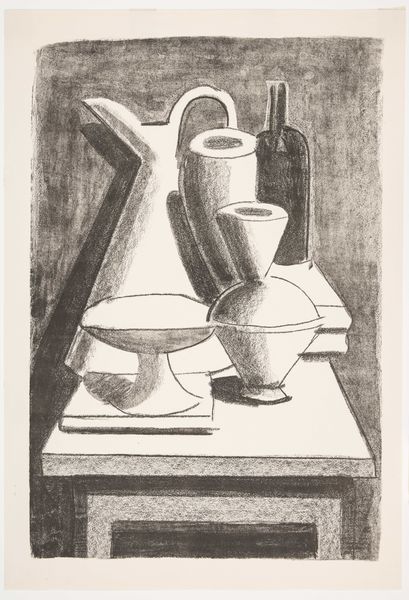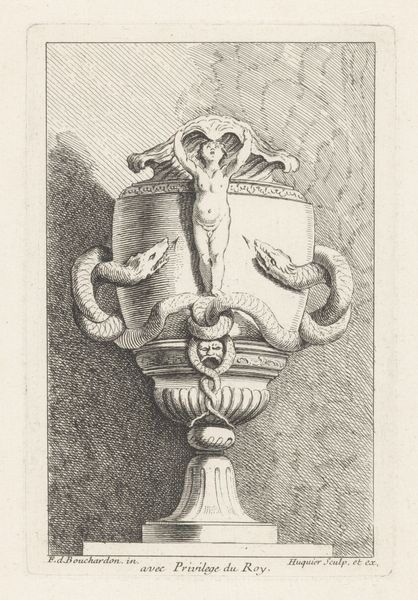
print, etching, ceramic
#
dutch-golden-age
# print
#
etching
#
book
#
ceramic
#
vase
#
charcoal drawing
#
oil painting
#
watercolor
#
erotic-art
Dimensions: height 117 mm, width 74 mm
Copyright: Rijks Museum: Open Domain
Curator: Frans Everbag's "Still Life with Pitcher and Books," made around 1914. What catches your eye first? Editor: It's quiet, wouldn't you say? That subdued palette and the composition... I almost feel like I'm intruding on someone's private moment with their reading. It's intimate, yet strangely distant at the same time. Curator: Absolutely. It evokes a sense of contemplation, a hushed atmosphere. What is also so curious, considering it's an etching, is how closely it resembles a Dutch Golden Age still life, particularly in the considered composition of objects. But those works are generally oils and quite photorealistic, not prints, like this. Editor: That's so true! It seems like a nostalgic nod, perhaps even a longing for a time when such scenes were common, symbols of wealth and status. Except this rendition feels almost… humbler. Less about flaunting, more about quiet appreciation. You can tell this ceramic carafe sitting on old books wasn't acquired at a royal sale or some place like that. Curator: Exactly. The choice of books also plays a role, doesn't it? J. Cats Werken implies wisdom, a historical understanding of one's roots. While Cats was a 17th century moralist, he experienced considerable fame for a time, mostly among the middle classes of the Netherlands, as this speaks to that period in Dutch society and where it placed it's value. The artist subtly links everyday life with grand intellectual tradition through art. Editor: But there's also the social element, right? Still lifes in this vein served as displays of civic pride and were part of a specific culture. Everbag re-imagines that with a personal intimacy that speaks to a later period of society, where such ideas and practices shifted or lost prominence. I wonder if this kind of quiet domestic scene made the bourgeois burghers feel a connection to this culture while still engaging with a more radical present of the art world. Curator: Perhaps he's inviting us to look closer, to rediscover value in the ordinary and reflect on a slower pace of life... It's a poignant commentary. Editor: Well, I think this piece really does inspire an atmosphere of respect, both to what is painted in the piece, but what also can be learned from where its roots come from and where the piece takes the history to today.
Comments
No comments
Be the first to comment and join the conversation on the ultimate creative platform.
